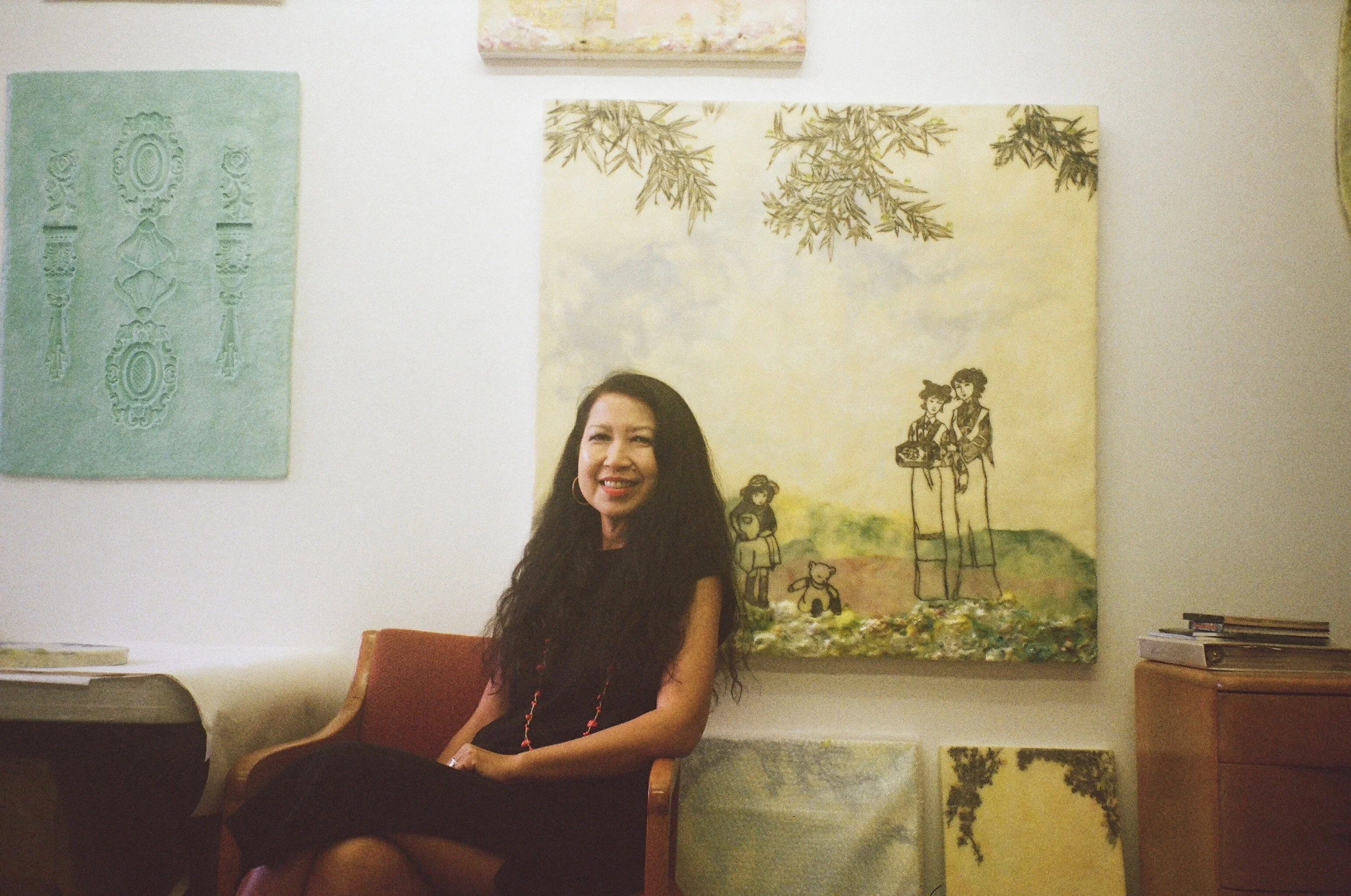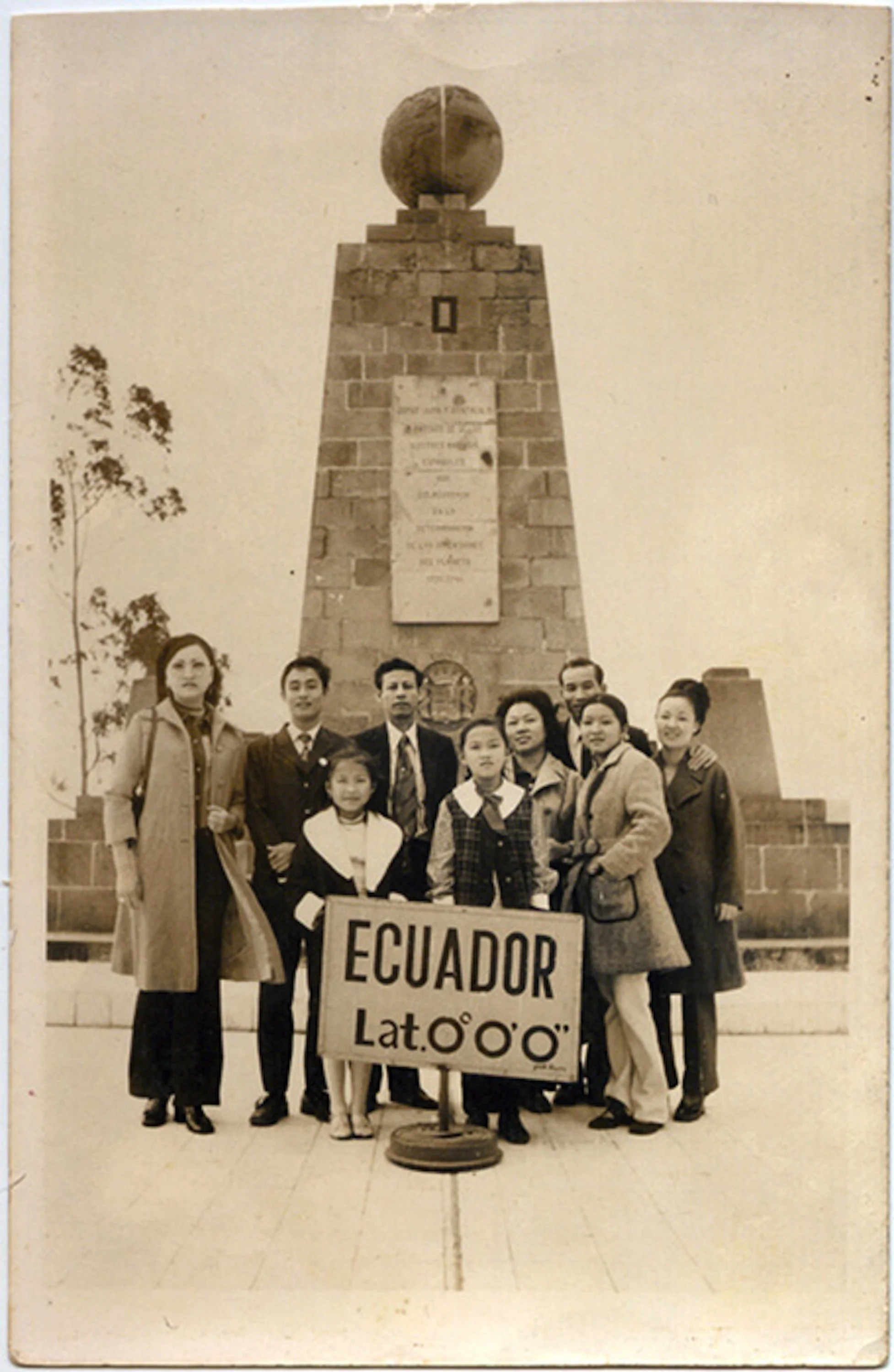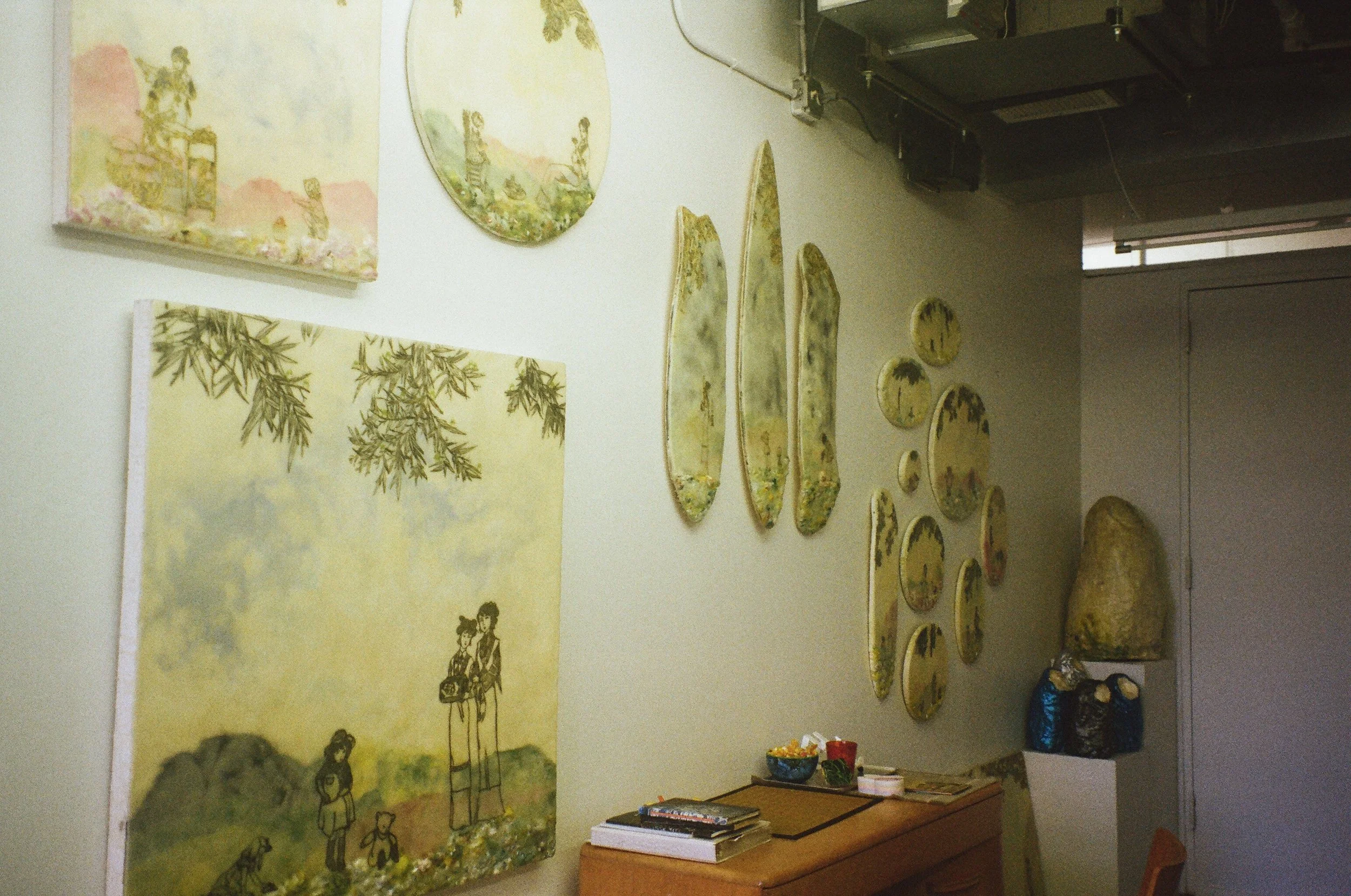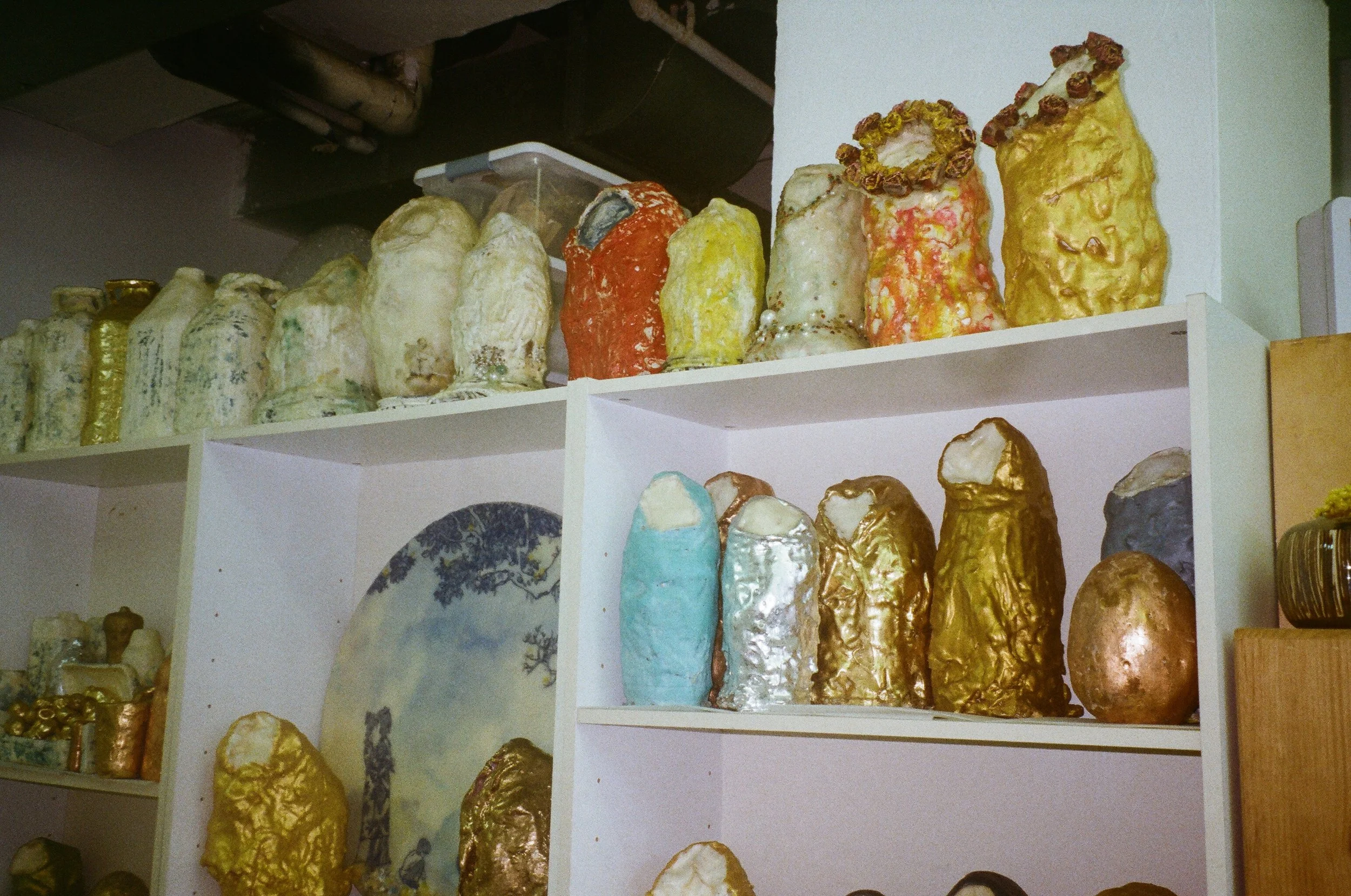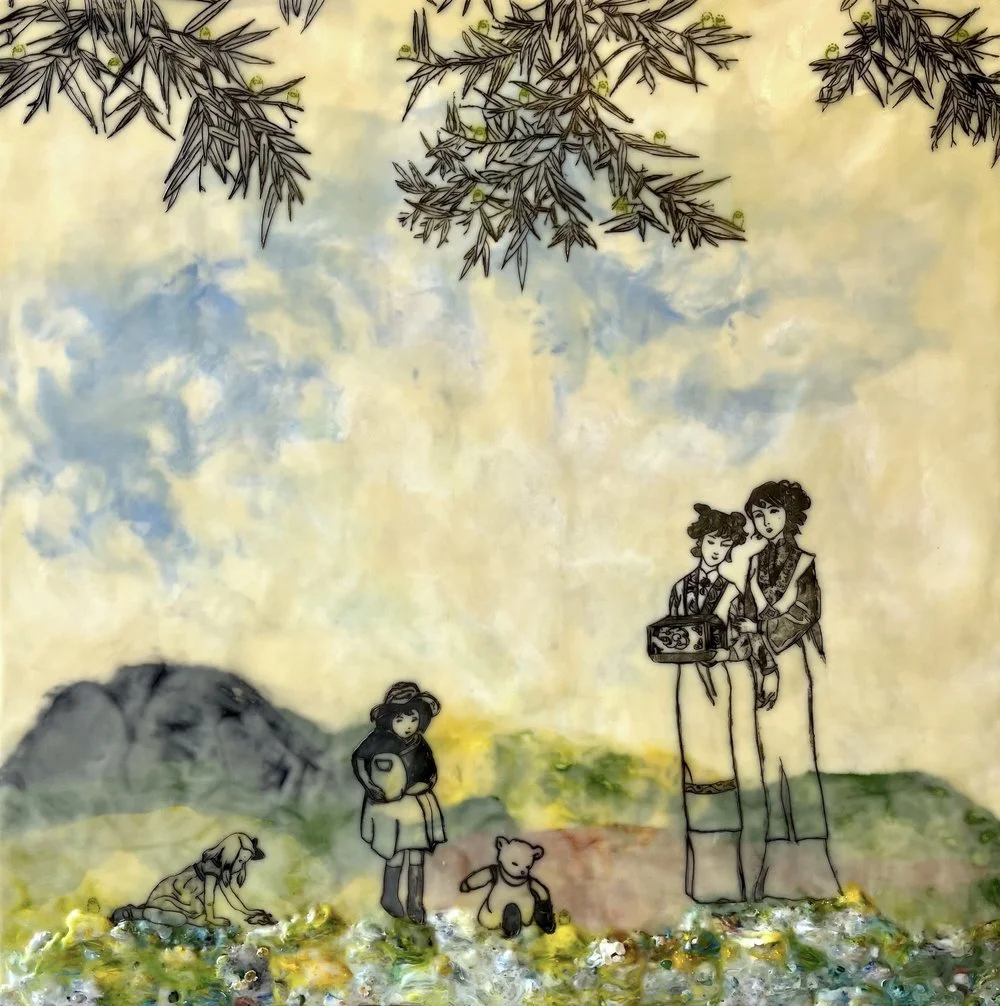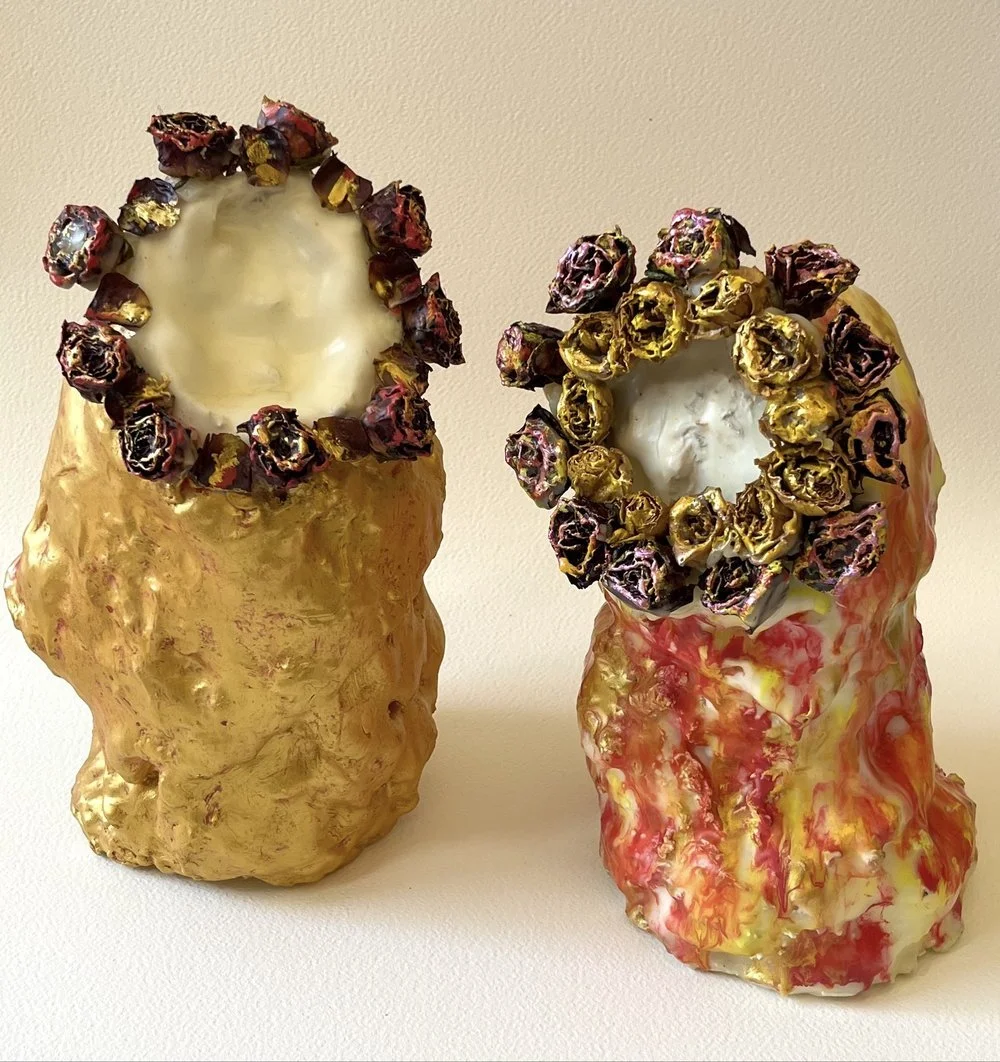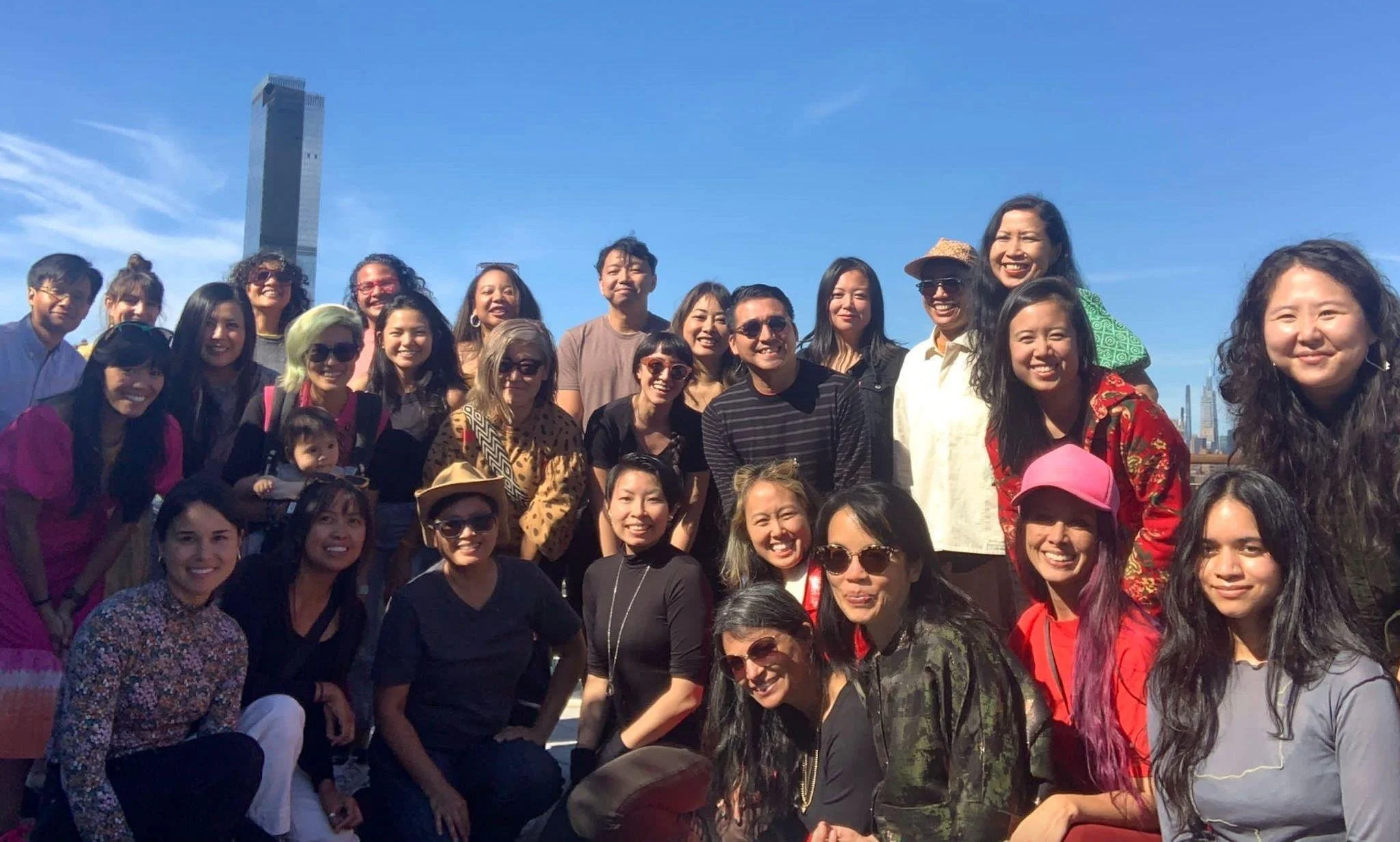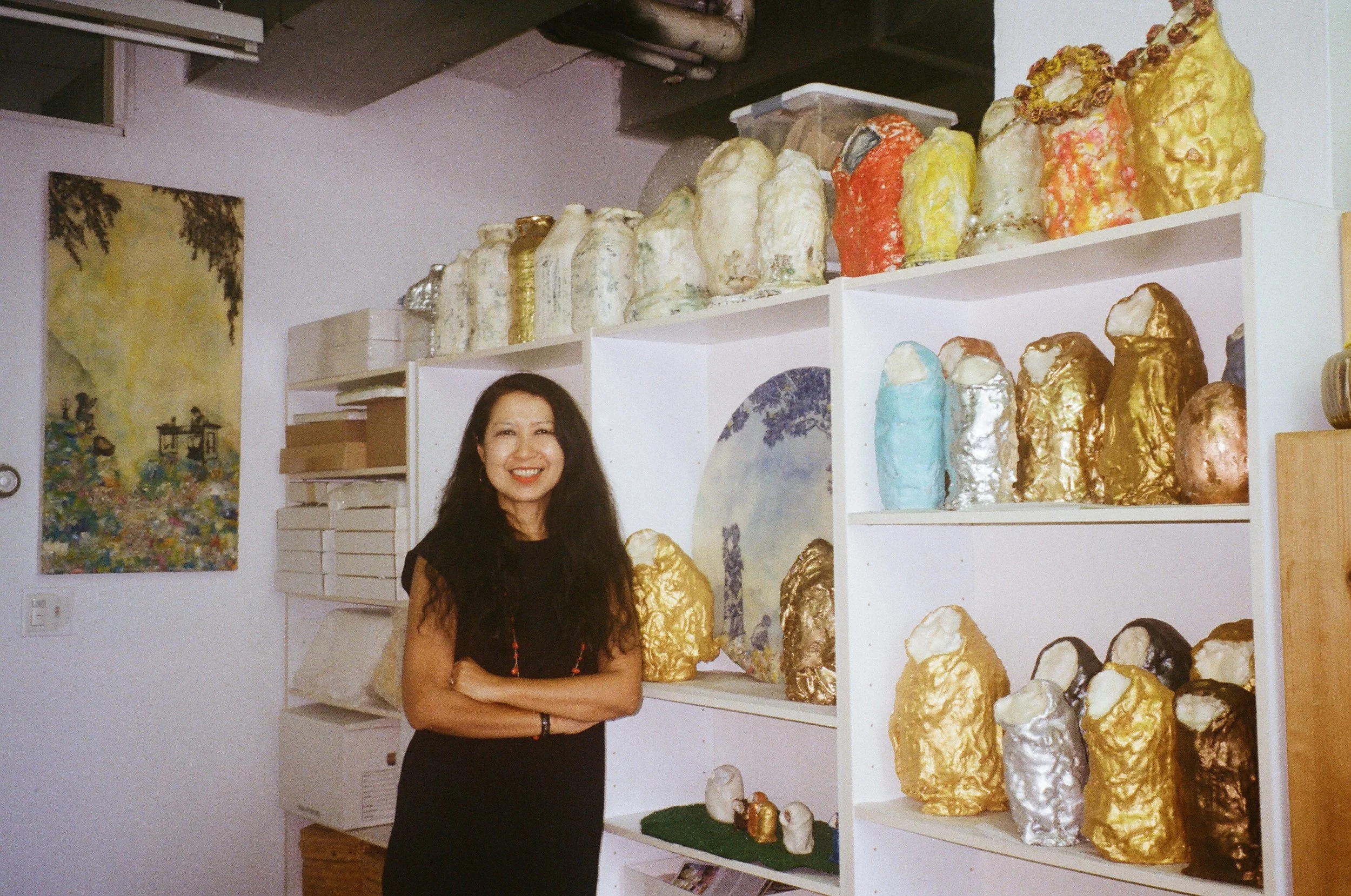Cecile Chong’s Art Highlights Our Similarities
There are endless reasons why someone might migrate. Coated with imposition and fed by the hopes of a better life, migration stories flow around the idea of identity in one way or another. Every time we're somewhere different than the place we first called home, there is a shift that can leave us burrowed in the unknown. As a result, there’s an unending desire to inhabit anything that answers the call of home, whether that’s the shape of a place, a feeling, a person, a food, or a memory.
In the 1930, Carmen Amen migrated from Canton, China, to Lima, Peru, and then to Manta, Ecuador. She and her husband had five children, but even then, she never felt at home. So they all returned to China in 1948. However, by that point, her daughter, Ana Victoria Wonsang, had a different sense of casa—she missed being in Latin America—and in 1960 when she was 20, she returned to Ecuador. Years later, she moved to Quito.
Cecile Chong, Wonsang’s daughter and Amen’s granddaughter was born in Ecuador to Chinese parents. Her artworks center community, something she got to see in different iterations as she moved between spaces. Chong holds different identities, though sometimes others saw her as an outsider.
“In Ecuador, I was considered the ‘other,’ and then in Macau, even though [my sister and I looked] Chinese . . . once [we] started speaking, we sounded like foreigners,” she tells Intervenxions. “In Chinese, there's the word ‘ghost’ for foreigners. It's called ‘guai,’ literally a ghost, so we were also ghost girls.”
In Quito, every time Chong brought a friend home, they would say it looked like a Chinese museum. But the chopsticks, mahjong, jade pendant, red packet, soy sauces, and woks were not artifacts; they were symbols of a part of her family’s identity. At the time, Quito had a tiny Chinese population, a community of less than 500.
“In Ecuador, I was considered the ‘other,’ and then in Macau, even though [my sister and I looked] Chinese . . . once [we] started speaking, we sounded like foreigners.”
From a very young age, she played with paper dolls. She used to grab a chair, turn it around, and spend hours drawing and cutting. This imaginative studio was where she first realized she wanted to be an artist. Art became a way for Chong to connect with diverse worlds and ways of being, paving the way for her future.
Her mother enrolled her in an American high school in Quito. Updating her family's tradition of migration, Chong moved to the United States. By 19, she was living alone in New York City; she went on to earn her bachelor of fine arts at Studio Art, Queens College, and a master of fine arts at Parsons School of Design.
“I did spend 14 years in Ecuador, so I spent five years in Asia,” she adds. “I think Macao is my ancestral home; Quito is my emotional and psychological home. I think about the landscape and the Andes as my home. I feel very strong roots connected to that landscape. And I feel like New York has been my art home.”
Amidst the midtown chaos, Chong carved out her oasis. For more than 10 years, she has had a studio as part of The Elizabeth Foundation for the Arts.
We meet on a late summer afternoon. Her paintings hang on the wall, her sculptures line a beautiful shelf, and her working table faces the window. I look around, immersed in the space and the amusement of entering her world while she grabs water and cookies for our chat. As I sit on the couch, taking it all in, I come to realize the space is a perfect encapsulation of her Chinese-Ecuadorian-New Yorker identities.
“Layering is at the center of Chong’s artwork. Somehow, within each layer, she encompasses her multiple identities and ways of expressing herself.”
Layering is at the center of Chong's artwork. Somehow, within each layer, she encompasses her multiple identities and ways of expressing herself. Each painting works as a collage. Chong uses encaustic painting, a technique that involves using heated wax and resin. Greek painters in Egypt first used the medium in the first to third centuries AD, particularly for funerals. Artists would paint important people, either in the prime of life or after death, and place the portrait over the person's mummy as a memorial.
As a ghost, she burns layer by layer, adding rice paper, different colors, remains of volcanoes (her parents took the ashes from their backyard after the eruption of Cotopaxi volcano), and various images from books. She chooses each appropriated figure, like a teddy bear, as a way to connect to her audience.
Through those links, Chong found a way to uplift our commonalities. But she didn’t just uplift togetherness in her art. For more than 25 years, she worked as an art educator for a middle school in NYC. “As a bilingual Spanish and art teacher for immigrant children, I relived my own experience through them,” she says. “I was able to use my own experience and empathy to try to facilitate that process for them, as well as a sense of empathy, understanding that we all came from different places.”
However, in 2016, she felt hopeless, like she couldn’t provide the same level of support. She could see on the faces of her students that belonging felt more impossible than ever because of President Donald Trump’s rhetoric and policies. To bring closer these two separate parts of herself—being an artist and being a teacher—she found a way to honor those immigrant families through art.
The result was the public art installation called EL DORADO – The New Forty Niners. The work traveled from borough to borough and from park to park. The project consists of 100 colored “guagua” (Quechua for baby) sculptures, 49 painted gold, to pay tribute to the 49% of New York City households that speak a language other than English. Without context, these figures might seem like a mixture of huge thumbs and weird flowers. But these guaguas appear in her paintings, alluding to our shared experiences as humans.
“Tío Eddie told me that these guaguas are actually swaddled, wrapped,” Chong says. “And then a good swaddle is when the guaguas could sit on the table like a bottle, so I'm like, ‘Wow, that is so interesting.’ And I just kept thinking about it [after the phone call ended].”
That same night Chong recalled she couldn't sleep after listening to Tío Eddie’s words. So she got her empty water bottle, swaddled it with plaster gauze, took it to school, and dipped it in encaustic. And, as her friends joke, that was how her first baby was born. She kept carrying them on her back around Parsons. Ecuadorian mothers have the tradition of carrying their children on their backs.
Every single one of the guaguas looks slightly different from the other. In Chong's work, they never appear alone.
Though her own sense of community hasn’t remained steadfast while living in NYC, she learned that if you don’t find a place where you belong, you can always create your own.
In March 2018, Chong and friends Sara Jimenez, Maia Cruz Palileo, and Gabriel de Guzman created the collective Asianish to unite those who struggled to find a place within their Asian identities. Coming together, they could share their experiences through conversations, artistic expression, and meals. Now, the group numbers more than 200 people.
Earlier in 2024, Chong and Sophia Ma cocurated the exhibition Gathering, which showcased 45 Asianish artists. The show took place at Tiger Strikes Asteroid in Bushwick, an artist-run gallery where Chong is codirector.
That same feeling of expanding a community was palpable when entering The Appearance: Art of the Asian Diaspora in Latin America & the Caribbean exhibition at Americas Society. The curators invited Chong to exhibit her Blooming Guaguas (2017); 30 other artists' work from 15 Latin American and Caribbean countries are also on display. Curated by Tie Jojima, a member of the Asianish group, and Yudi Rafael, the show represents the first time Latin American and Caribbean artists of Asian descent could discuss the complexities one identity can hold in this way.
Since her last public art piece, Chong has become even more interested in art beyond galleries. When she was 10, living away from Quito and her mother, she used to look at nature, particularly at the sky, and think, “There are also trees in Macao; I think my mother is also watching the same moon in Quito.” As we talk about how scary it is to inhabit a world that is burning, Chong picks up her cell phone and shows me images of green guaguas in a cactus format, a new in-progress public installation. While her paintings and sculptures are an effort to make connections, her public art is an urgent reminder of the intrinsic role nature plays in our daily lives.
Earlier as an artist, Chong sought to make the work she needed. But now that she has a community that can relate to living between and never within identities, she wants to look outward. Her new goal is to contribute to a larger structure to make a difference. And she hopes this path will lead her back to Quito, her emotional home, where she has never exhibited her work but that has an art scene she wants to learn from and support.
As someone who moved to NYC from Brazil a few weeks ago, my eagerness to understand her experiences was how I made sense of my life in this very specific moment. And likely because she understands what it’s like to try to find your footing in new places, she warmly and kindly welcomed me to her studio. I go home with a pack of cookies that reminded me of one of my favorite sweets from Brazil. ”You should take it,” she insists.

